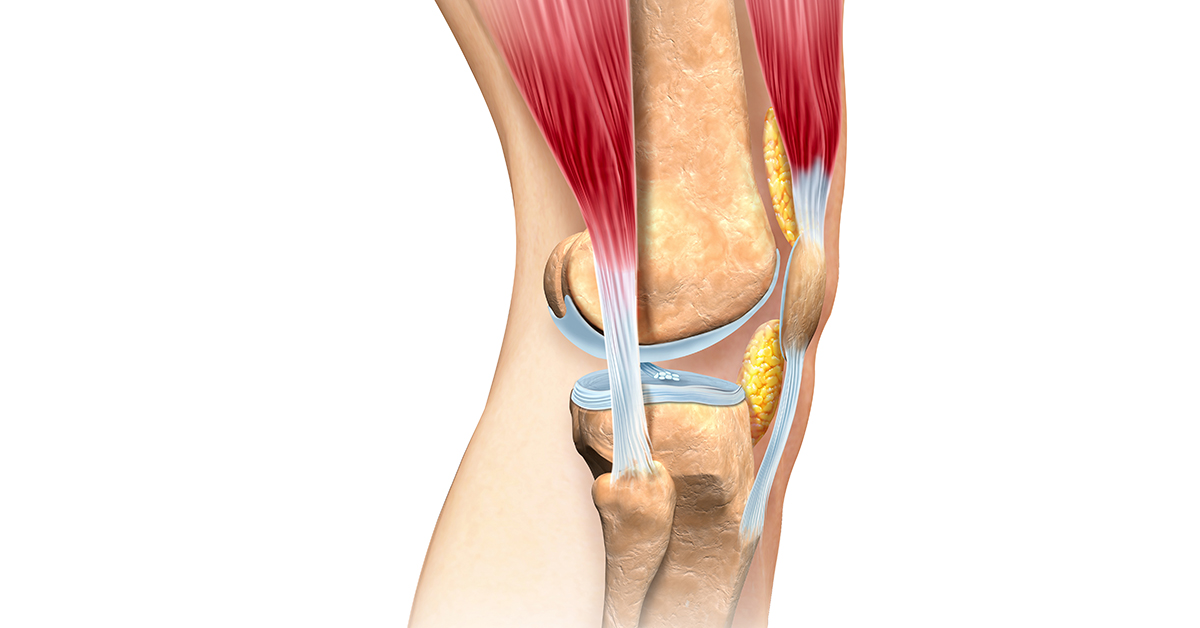
What is Knee Arthroscopy Repair of Both (Medial or Lateral) Menisci?
Arthroscopic meniscus repair is a surgical procedure used to treat a torn meniscus, which is the cartilage between your thigh bone and shin bone in the knee. Meniscus tears are a very common injury. The menisci can be torn through sports injuries, or through natural tissue degeneration. Degeneration is a normal part of aging where tissue weakens from everyday wear and tear over time. A tear that occurs due to degeneration can occur with even a movement that otherwise would not result in injury, like getting up from a chair. Conservative treatment is always attempted first with meniscal tears, particularly rest, ice, compression, and elevation (RICE) and physical therapy. If your tear does not respond to conservative treatment, your physician may recommend this procedure. This procedure, if coupled successfully with rehabilitation during recovery, may return you to your pre-injury physical state.
Who needs this?
The knee joint is very important in helping us move. If a problem occurs with the knee, it can be very painful and make mobility difficult or impossible. One of the most common knee injuries is a torn meniscus. This injury can happen to anyone, but often happens to athletes and older people.
The meniscus is a C-shaped piece of cartilage in the knee. There are two menisci in each knee joint, the medial meniscus on the inner side and the lateral meniscus on the outer side. These provides stability and protection to the knee, but if they're torn, problems can occur. Symptoms vary depending on how and where the meniscus is torn, but symptoms can include pain, instability or feeling the knee "giving," stiffness, swelling, and an impaired range of motion. Sliding, popping, or locking may occur if the tear is left untreated because loose fragments from the meniscus tear will drift into the joint.
Type of tear and location are important in this procedure. Certain types of tears may not be repairable, but their symptoms are still treatable. If the tear is on the outer edge of the meniscus, repair is possible. This is because the outer edge receives better blood flow than the inner area, and therefore heals better. Treatment of tears in the inner area may be limited to removal of fragments and smoothing of the rough edges of the tear, a procedure called a meniscectomy. Repair may not be attempted because tears in that area might not heal well, but partial or total meniscectomy may provide relief from the painful symptoms. Only your doctor can determine how to best treat your tear.
What are the steps in this procedure?
Initial Incisions and Insertion of Arthroscope
Once general anesthesia is applied, the surgeon makes small incisions in the back and front of the knee. An arthroscope is then inserted into the joint. An arthroscopes is a very small camera that lets the surgeon see inside of your joint. The surgeon then inserts instruments through the other small incisions and, using the arthroscope for image guidance, assesses the meniscus damage and how to treat it.
Removal of Loose Fragments
Loose fragments from the torn meniscus are removed. This clears the area for the next step.Repairing the Tear
If the tear is located in an area that receives a lot of blood, your surgeon may decided to repair it with sutures or fasteners. This closes the tear edges together, so that the good blood flow can heal the tear correctly. If the tear is in an area that does not receive a lot of blood, the surgeon will trim and shave down the tear.
Finishing the Procedure
After the meniscectomy is performed, the instruments are removed and the injections are closed. The knee is then wrapped, and ice is applied. Your surgeon may prescribe a cast or method of immobilization for a few weeks.
After the Surgery
After surgery, you will be moved to a recovery room for monitoring. You may experience some pain and swelling initially, which is very common after knee surgery. This procedure is most often performed as an outpatient procedure, so most patients leave hours after surgery. Most patients are able to return to work within a few days, provided the work is not labor intensive.
Rehabilitation exercises are a very important step in recovering from a torn meniscus. Physical therapy exercises will be prescribed to return your knee to its pre-tear strength, range of motion, and mobility. The amount of time needed to make a full recovery depends on the severity of the tear and the patient's adherence to physical therapy.


